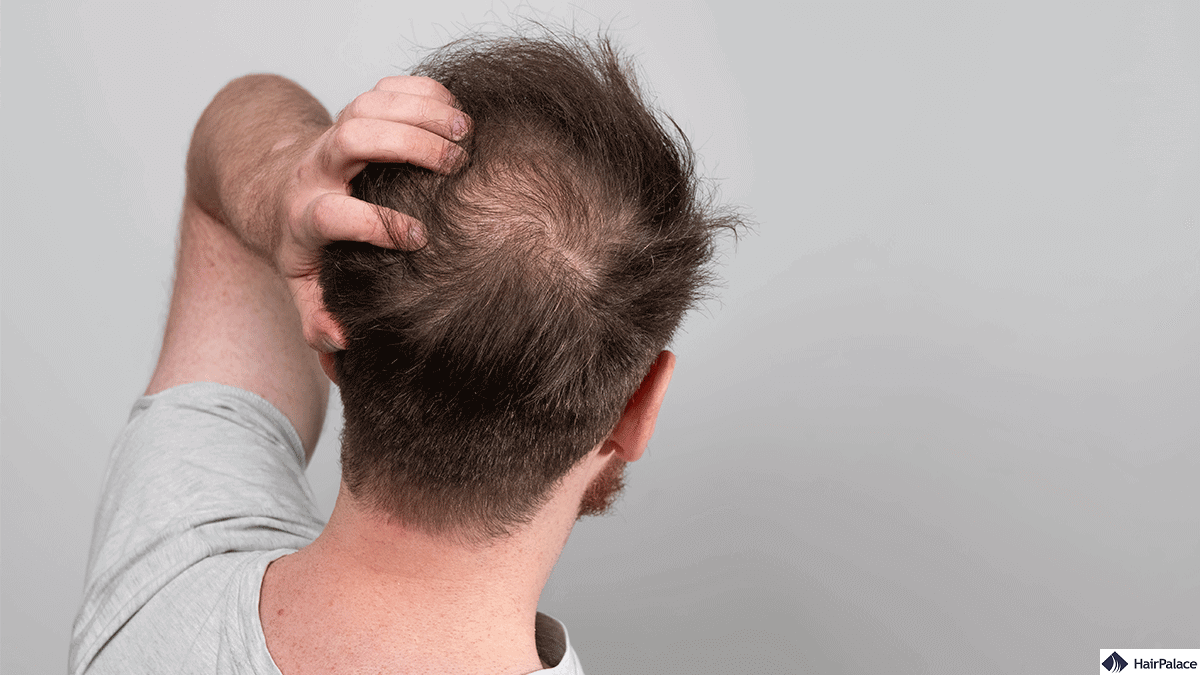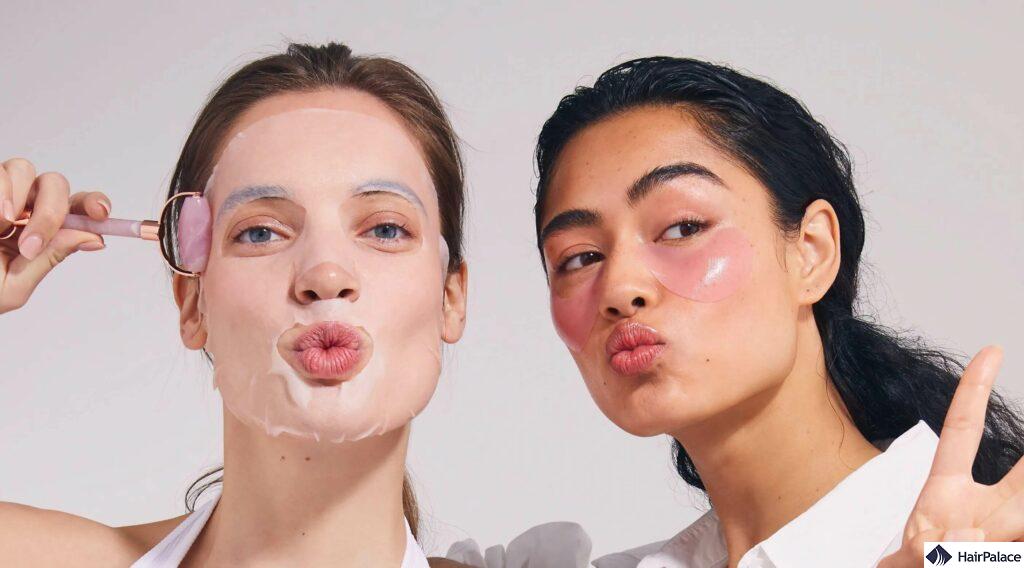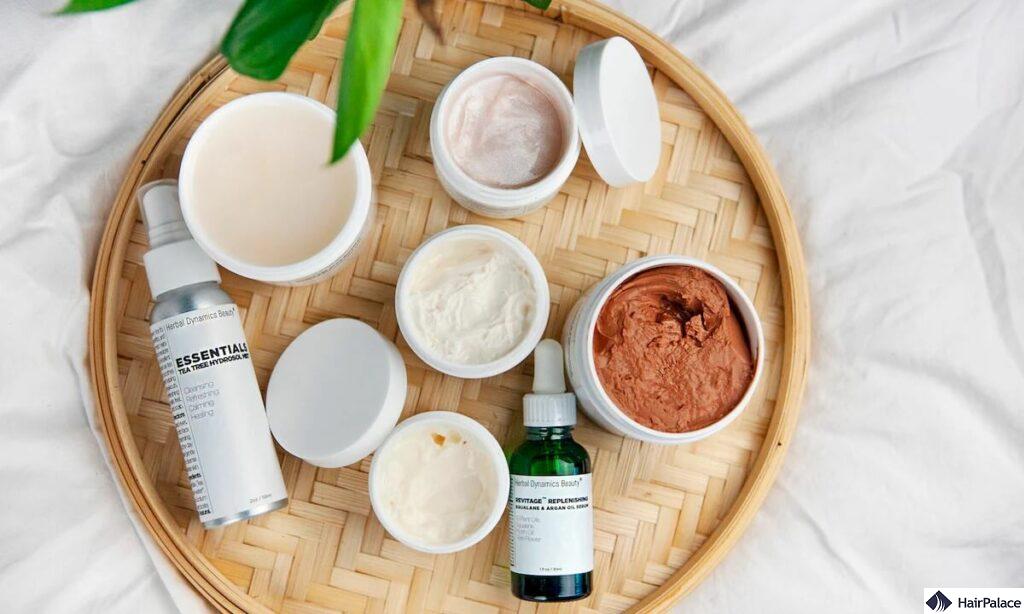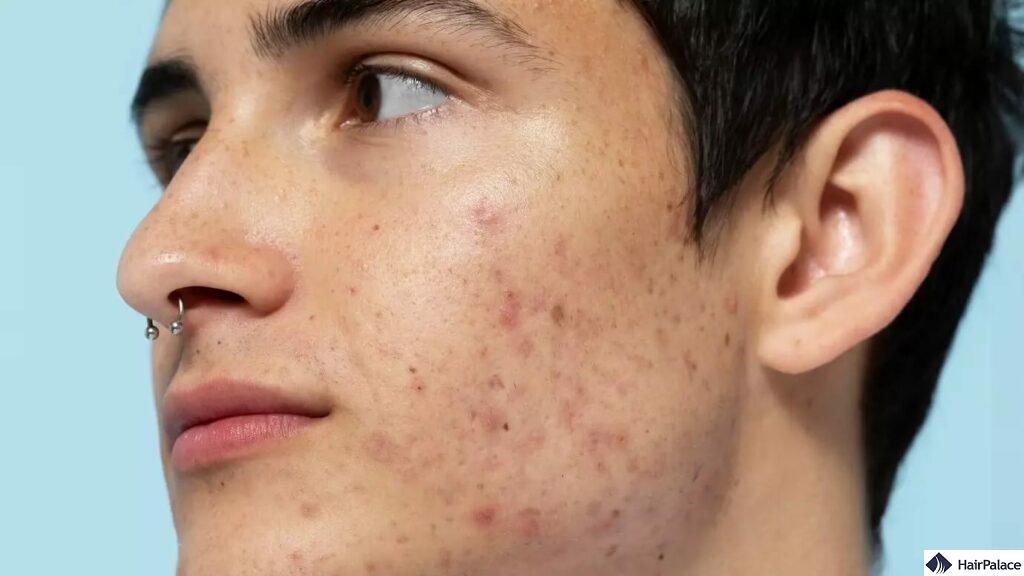How to Use Glycolic Acid on Scalp [Complete Guide]

Glycolic acid, a well-known skincare ingredient for its powerful exfoliating properties, is gaining popularity in scalp care routines.
Glycolic acid gently removes dead skin cells, excess oil, and product buildup to promote a healthier scalp environment and support hair growth.
In this complete guide, we’ll explore how to use glycolic acid on the scalp.
Go over its benefits, and share essential tips to ensure you’re using it safely and effectively for optimal results.
Whether you want to improve scalp health or boost your hair care routine, this guide has you covered.
- What is glycolic acid?
- Can you use glycolic acid for hair loss?
- When to avoid glycolic acid
- How to apply glycolic acid
- How often should you use such scalp treatments?
- What are the risks associated with using glycolic acid for hair loss?
- What are the advantages of glycolic acid?
- Does glycolic acid prevent hair loss?
- Alternative hair loss treatments
What is glycolic acid?

Glycolic acid, is a powerful alpha hydroxy acid (AHA) derived from sugar cane. It is renowned for its ability to penetrate the skin due to its small molecular size.
This makes it a popular ingredient in skincare for promoting exfoliation by dissolving the bonds between dead skin cells, revealing brighter, smoother skin.
It’s frequently used to address various concerns thanks to its role in stimulating cell turnover and clearing clogged pores.
Additionally, glycolic acid enhances skin hydration by increasing the skin’s moisture-retaining components.
However, its exfoliating nature can increase sun sensitivity, so consistent use of sunscreen is essential.
Can you use glycolic acid for hair loss?
Glycolic acid is primarily known for its benefits in skincare, but it has also gained some attention for its potential role in hair care.
Particularly in addressing scalp health and potentially aiding with hair loss.
Glycolic acid works by exfoliating the scalp and removing dead and dehydrated cells, excess oil, and product buildup.
A healthy scalp is essential for strong hair growth, and exfoliation can help unclog hair follicles.
This can potentially create a better environment for hair to grow.
By exfoliating the scalp, glycolic acid may enhance the absorption of other hair loss treatments, such as serums or oils, making them more effective.
Glycolic acid has humectant properties, which means it can help retain moisture in , preventing dryness and flakiness.
When to avoid glycolic acid

You should avoid glycolic acid for hair if you have:
- Excessive Sun Exposure: If you’re exposed to strong sun without proper protection, glycolic acid can increase the risk of sunburn or hyperpigmentation due to its exfoliating effect.
- Sensitive or Irritated Skin: If your skin is irritated, inflamed, or has active breakouts, glycolic acid can exacerbate sensitivity and irritation.
- Sunburned Skin: Avoid using glycolic acid on sunburned skin, as it can further irritate and damage the compromised skin barrier.
- Using Other Exfoliants: If you’re using other exfoliants like salicylic acid, retinoids, or physical scrubs, combining them with glycolic acid can lead to over-exfoliation and irritation.
- Recently undergone scalp treatments: After chemical peels, laser treatments, or microdermabrasion, your skin is often too sensitive for glycolic acid, and it should be avoided until the skin heals.
How to apply glycolic acid

You must start with a gentle cleanser to remove any dirt, or oil built up on your skin.
This prepares your skin or scalp for better absorption of the glycolic acid.
Before using glycolic acid for the first time, do a patch test on a small area of your skin to check for any irritation or allergic reactions.
Wait 24 hours to ensure there are no adverse effects on skin or hair health.
Gently massage a glycolic acid-based product onto the scalp, focusing on areas with buildup or irritation.
Start with a lower concentration (around 5-10%) and use it once or twice a week.
As your skin or scalp builds tolerance, you can gradually increase usage and concentration, if necessary.
After applying glycolic acid, use a moisturizer to hydrate your skin or scalp.
This helps counteract any dryness caused by the exfoliation.
Lastly, glycolic acid can make your skin more sensitive to the sun, so always apply sunscreen during the day when using it, even if you’re using it at night.
How often should you use such scalp treatments?
Scalp treatments with glycolic acid should generally be used once or twice a week, depending on the product concentration and your scalp’s sensitivity.
If you’re new to glycolic acid or have a sensitive scalp, it’s best to start with once a week to see how your skin reacts.
As your scalp builds tolerance, you can increase the frequency to twice a week if needed.
Overusing glycolic acid treatments can lead to irritation, dryness, or increased sensitivity, so it’s important to monitor how your scalp responds and adjust accordingly.
Also, always follow up with a hydrating treatment to maintain a healthy scalp balance.
What are the risks associated with using glycolic acid for hair loss?
Using glycolic acid for hair loss or scalp treatments comes with some potential risks, particularly if you have sensitive skin. These include:
- Irritation and Redness: Glycolic acid is an exfoliant, and excessive use or using a high concentration can lead to scalp irritation, redness, or a burning sensation.
- Over-exfoliation: Applying glycolic acid too frequently can lead to over-exfoliation, stripping the scalp of its natural oils and causing dryness, flakiness, or even increased sensitivity.
- Increased Sun Sensitivity: Just as with skin, glycolic acid makes the scalp more sensitive to the sun, increasing the risk of sunburn or scalp damage if not adequately protected.
- Allergic Reactions: Some people may experience allergic reactions to glycolic acid, leading to symptoms like itching, swelling, or a rash.
- Damage to Hair Follicles: If overused or applied in high concentrations, glycolic acid could potentially irritate hair follicles, leading to weakened hair roots or temporary shedding.
- Interaction with Other Treatments: Glycolic acid may interfere with other topical treatments for hair loss by reducing their effectiveness or causing scalp irritation when used together.
- Worsening of Certain Scalp Conditions: People with scalp conditions such as psoriasis, eczema, or dermatitis may find that glycolic acid exacerbates these conditions.
What are the advantages of glycolic acid?

Glycolic acid offers several advantages, particularly in skin care and, to some extent, in scalp care. Here are the key benefits:
1. Exfoliation
Glycolic acid is a powerful exfoliant that breaks down dead cells, promoting their removal.
This leads to smoother, brighter skin and helps to unclog pores, making it useful for those with excess sebum or oily hair.
2. Anti-Aging Benefits
Regular use can reduce fine lines, increase collagen production and lead to fewer wrinkles overall.
Over time, this can improve skin texture and elasticity, leading to more youthful-looking skin.
3. Treatment of Hyperpigmentation
Glycolic acid is effective at fading dark spots, sun damage, and hyperpigmentation by encouraging the shedding of discoloured skin cells and promoting an even skin tone.
4. Improved Absorption of Other Products
By exfoliating the outer layer of dead skin, glycolic acid helps other skincare or hair treatments penetrate more effectively, enhancing their benefits.
5. Acne Treatment

Glycolic acid can help prevent and treat acne by clearing blocked pores and reducing the build-up of oil, dead skin cells, and debris that contribute to breakouts.
6. Moisturizing Properties
It has humectant properties, meaning it helps attract and retain moisture in the skin, preventing dryness and maintaining hydration.
This can be particularly beneficial for both skin and scalp health.
7. Scalp Health
In scalp treatments, glycolic acid can exfoliate dead skin cells and product buildup, improving scalp health and creating a better environment for hair growth.
It may also help with issues like dandruff or flakiness by promoting a healthy scalp.
8. Skin Brightening
Consistent use of glycolic acid helps reveal a more radiant complexion by removing dull, dead skin cells and promoting the regeneration of new ones.
9. Reducing Keratosis Pilaris
Glycolic acid can help smooth and soften the rough bumps associated with keratosis pilaris by exfoliating the skin and keeping the hair follicles clear.
In summary, glycolic acid is valued for its ability to exfoliate, rejuvenate, and hydrate the skin.
However, it can also improve the overall appearance of the complexion and scalp health.
However, it should be used with care to avoid irritation.
Does glycolic acid prevent hair loss?
There is no strong scientific evidence to suggest that glycolic acid directly prevents hair loss.
While it can improve scalp health by keeping hair follicles clear, it doesn’t specifically target the underlying causes of hair loss.
Glycolic acid can be part of a scalp care routine. However, it shouldn’t be considered a primary solution for preventing or reversing hair loss.
Alternative hair loss treatments
While this exfoliant agent is unlikely to solve your hair loss on its own, there are several other treatments you may consider:
Last medically reviewed on October 4th, 2024
- Ditre CM. Glycolic acid peels. Dermatol Ther. 2000;13(2):165–172.https://scholar.google.com/scholar_lookup?journal=Dermatol+Ther&title=Glycolic+acid+peels&author=CM+Ditre&volume=13&issue=2&publication_year=2000&pages=165-172&
- Abels C, Kaszuba A, Michalak I, Werdier D, Knie U, Kaszuba A. A 10% glycolic acid containing oil-in-water emulsion improves mild acne: a randomized double-blind placebo-controlled trial. J Cosmet Dermatol. 2011 Sep;10(3):202-9. doi: 10.1111/j.1473-2165.2011.00572.x. PMID: 21896132.https://pubmed.ncbi.nlm.nih.gov/21896132/
- Yu RJ. Discover and development of alpha hydroxy1 acids and polyhydroxy acids for use in various dermatological condition. Inter Cong Dermatol. 2004:35.https://scholar.google.com/scholar_lookup?journal=Inter+Cong+Dermatol&title=Discover+and+development+of+alpha+hydroxy1+acids+and+polyhydroxy+acids+for+use+in+various+dermatological+condition&author=RJ+Yu&publication_year=2004&pages=35&
- Zeng BB, Yang T, Li JJ, Lu WJ, Wang LM, Zhang J, Lin XX. Clinical observation of keratosis pilaris treated with glycolic acid and retinoid cream. Zhongguo Meirong Yixue. 2014;23:1988–1989.https://scholar.google.com/scholar_lookup?journal=Zhongguo+Meirong+Yixue&title=Clinical+observation+of+keratosis+pilaris+treated+with+glycolic+acid+and+retinoid+cream&author=BB+Zeng&author=T+Yang&author=JJ+Li&author=WJ+Lu&author=LM+Wang&volume=23&publication_year=2014&pages=1988-1989&
- Roberts WE. Chemical peeling in ethnic/dark skin. Dermatol Ther. 2004;17(2):196–205.https://pubmed.ncbi.nlm.nih.gov/15113287


